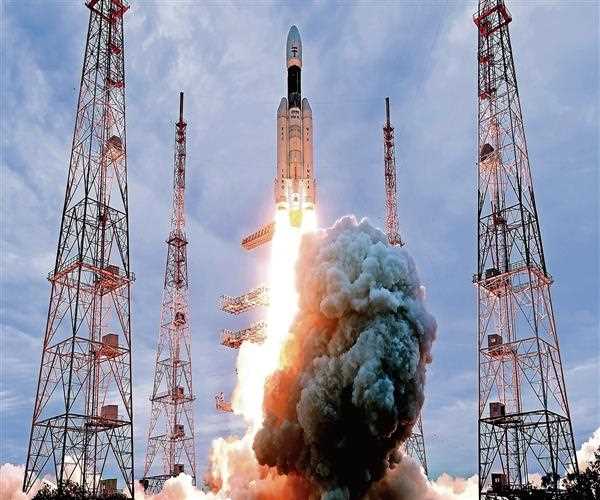Search here

24-Jan-2024 , Updated on 1/24/2024 9:19:21 AM
Chandrayan 3 back to life and will help in taking humans to Moon
Historically, India achieved a significant milestone through its Chandrayaan-3 mission that successfully landed on the moon and made it one of the four nations to achieve such. This success follows the failure of Chandrayaan-2's Vikram lander in 2019, demonstrating India’s commitment and resistance to space research. The successful soft landing not only is a great step in the moon exploration but also promises to lead the way for improved human lunar exploration.
Chandrayaan-3's Successful Soft Landing:
On August 23, 2023, at precisely 6:00 p.m., the Chandrayaan-3 landed its lander module on the lunar surface at 03 p.m., ISTRAC Bengaluru celebrated it spectacularly! The successful mission put an end to the painful memory of the Chandrayaan-2 drawback and showcased India’s ability to achieve complicated space missions.
Key Achievements and Lessons from Chandrayaan-3:
1. Precision in Landing:
- The lander obtained the majority of the nominal landing conditions that included a velocity of less than 2 meters per second. This accuracy gives confidence in the health of the lander for the preplanned experiments.
2. Communication Link Established:
- An important aspect of any lunar mission is the creation of an information channel. The link between the Lander and Mission Operations Complex was established in Bangalore, ensuring a smooth data transfer.
3. Learning from Chandrayaan-2:
- The lessons from the Chandrayaan-2 mission have been very instrumental in enabling the success of Chandrayaan-3. The careful planning and implementation show that ISRO is very dedicated to tackling the challenges as well as bettering with every single mission.
Prime Minister's Perspective:
Speaking from South Africa, Prime Minister Narendra Modi pointed out that the success of Chandrayaan-3 is not only India’s achievement alone but a great victory for all humankind. In this context, he underscored the importance of a human-centric approach and believed that other nations even from the Global South can shoot for the moon or beyond. The Prime Minister’s message is by India's vibration to the shared space exploration.
Chandrayaan-3 Mission Objectives:
The Chandrayaan-3 mission, launched on July 14, 2023, is meant to showcase several technological developments for interplanetary missions. The key objectives include:
- Landing softly and safely on the lunar surface
- Rover mobility, as well as in-situ scientific experiments on the moon.
- Demonstrating the new technologies required for space travel in the future
Key Contributors and Acknowledgments:
With the successful implementation of Chandrayaan-3, it is very clear that this success was a collaborative effort from many different teams at ISRO. The key team that includes Project Director P. Veeramuthuvel, Mission Director Sreekanth, and Associate Project Director Kalpana K. played a very important role in the successful implementation of this mission Such a recognition also covers the navigation guidance and control team, propulsion team, sensors grouping as well as all mainframe subsystem groups.
Chandrayaan-3's Role in Advancing Lunar Exploration:
1. Scientific Payloads for Lunar Experiments:
- The lander and the rover, with a lifespan of one lunar day (14 Earth days), have scientific payloads to analyze whether the material on the lunar surface is purely inorganic or not. These data will add to the understanding of what composition the moon is made of.
2. Paving the Way for Human Exploration:
- The triumph of Chandrayaan-3 is a great stride that India has taken in implementing its bold dream of putting a man on the moon by 2040. The successes of the mission create a foundation for manned lunar missions in the future, being consistent with India’s Gaganyaan project.
India's Vision for Human Moon Landing:
The Union Minister Hardeep Singh Puri, speaking at the press conference said that Chandrayaan-3 is just a starter. India targets launching a man on the moon by 2040 which is one of their many goals and initiatives for empowerment in space science. The Gaganyaan project is meant to prove the capability of human space flight in line with this vision.
Unique Experiment: Chandrayaan-3's Propulsion Module Detour:
Thinking outside the box, Chandrayaan-3’s Propulsion Module veered off of the lunar orbit and onto Earth. This experiment, similar to the hop test which was conducted on Vikram Lander, demonstrates India’s ability to maneuver spacecraft in the outer atmosphere. The detour introduces a new facet to the mission, illustrating flexibility and also responsiveness in running space exploration experiments.
Chandrayaan-3's successful moon landing means that India is at a new stage of conquest in terms of its space exploration section. The successful mission not only removes the past failures but also creates an opportunity for something new; like human exploration to the moon. With the human-oriented vision of Prime Minister Narendra Modi with our commitment to collaborative space endeavors, Chandrayaan-3 becomes an inspiration for aspiring Spacefaring nations. With a bright future before it, the triumph of this mission will drive India closer to its dream of an astronaut on the moon by 2040 which makes her one of the few powerful players in space activities.

Content writer
I am a content writter !
Join Our Newsletter
Subscribe to our newsletter to receive emails about new views posts, releases and updates.
Copyright 2010 - 2025 MindStick Software Pvt. Ltd. All Rights Reserved Privacy Policy | Terms & Conditions | Cookie Policy